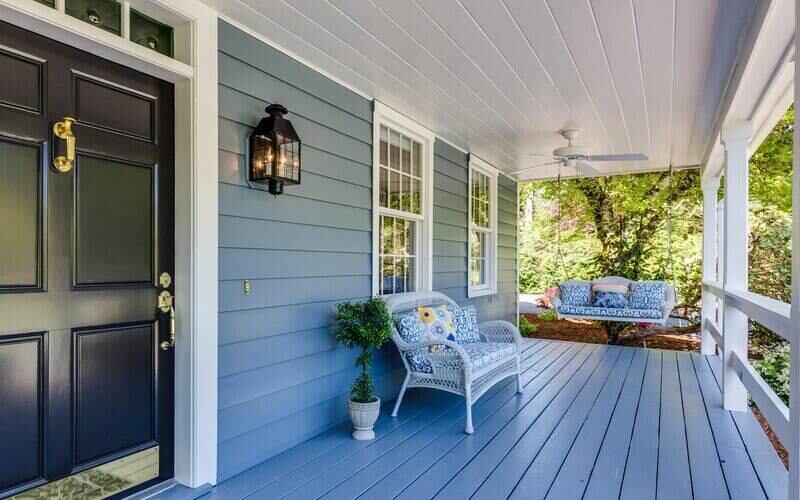Some experts argue getting a building and pest inspection done is a non-negotiable when buying property. This is because it allows the buyer to pull out of the deal or renegotiate if unsatisfied with its findings if the property contract is conditional - potentially saving you from buying a dodgy home. But since building and pest conditions mean your offer is conditional, this could potentially mean it isn’t as competitive as any unconditional offers on the table.
In the current seller’s market, should you risk it to get the biscuit? Or do you need to cover your ass(et) by organising a building and pest inspection?
Advertisement
Buying a home or looking to refinance? The table below features home loans with some of the lowest interest rates on the market for owner occupiers.
| Lender | Home Loan | Interest Rate | Comparison Rate* | Monthly Repayment | Repayment type | Rate Type | Offset | Redraw | Ongoing Fees | Upfront Fees | Max LVR | Lump Sum Repayment | Extra Repayments | Split Loan Option | Tags | Features | Link | Compare | Promoted Product | Disclosure |
|---|---|---|---|---|---|---|---|---|---|---|---|---|---|---|---|---|---|---|---|---|
5.54% p.a. | 5.58% p.a. | $2,852 | Principal & Interest | Variable | $0 | $530 | 90% |
| Promoted | Disclosure | ||||||||||
5.49% p.a. | 5.40% p.a. | $2,836 | Principal & Interest | Variable | $0 | $0 | 80% |
| Promoted | Disclosure | ||||||||||
5.64% p.a. | 5.89% p.a. | $2,883 | Principal & Interest | Variable | $250 | $250 | 60% |
| Promoted | Disclosure | ||||||||||
5.64% p.a. | 5.89% p.a. | $2,883 | Principal & Interest | Variable | $248 | $350 | 60% |
| Disclosure |
What is a building and pest inspection, and what’s on the report?
A building and pest report is written up based on the findings of a building and pest inspection. The purpose of a building and pest inspection is to identify any issues with the property - structurally or otherwise - so that you’re fully informed about the condition of your new asset. With a building and pest report, you won’t be caught out by any nasty, unexpected surprises.
Issues that could pop up on a building and pest report include:
-
Structural issues with the building
-
Any evidence of termite infestations/other pest infestations
-
Holes or cracks in the roof or walls not visible in plain sight
-
Any mould, rust, stains, dampness, rotting timber, or any other kind of damage to the property
-
Doors, windows, or any other feature of the home not working correctly
-
Any potential electrical, gas, or water issues
-
Any other issue with the property identified by the inspector
Michael Wardlaw, real estate agent at House Property Agents, said it’s safe to say that you will find problems that are typical idiosyncrasies of a property once you get your building and pest report back.
“[Problems could include] a squeaking hinge, a loose door, a handle that needs fixing, a little bit of paint missing, a corner that’s popped,” Mr Wardlaw told Savings.com.au.
“There could be some small issues like that that you’d expect when buying a home that might be 10 to 40 years old.”
You have two options once you’ve received your building and pest report: (1) you can be satisfied with the findings and proceed as agreed, or (2) you can be unsatisfied and either renegotiate your terms or back out of the contract. That is, if the building and pest conditions are listed on the contract.
Getting a building and pest report done without mention of it on the contract (for example, if you signed an unconditional contract) can leave you without a leg to stand on, as you may need to follow through with the purchase no matter what the findings are.
Do you need a building and pest inspection before you buy?
Legally, you’re under no obligation to have a building and pest report drawn up for you. It’s meant to be for the benefit of the buyer, not the seller - so you’re more than allowed to not get one done.
However, some experts advise against this. Mr Wardlaw said it’s not worth skipping over because you never know what’s hidden behind the walls.
“Whether it be termites or a structural problem that you can’t see with the naked eye,” Mr Wardlaw told Savings.com.au.
“Not doing a building and pest inspection is like buying a car without getting an RACQ check. It is very risky.”
Sam Davenport, buyer and vendor advocate at Prop Culture, said the biggest risk of not getting a building and pest inspection is unforeseen costs.
“Without going into the roof cavity or sub floor space, you are unlikely to know if there are lingering building issues waiting to cause an expensive problem,” Ms Davenport told Savings.com.au.
Mr Wardlaw said that with a property being such a large asset, a building and pest report is vital as it could identify hidden issues - issues that could otherwise cost you thousands of dollars in repairs.
“One in 100 people don’t do a building and pest inspection because they either have a family friend or relative who’s smart enough to see the issues,” Mr Wardlaw said.
“So if you’ve got a family member who can spot any concerns, you could make the contract subject to a pest inspection, not a building inspection.
“But again, you’re still having a condition on the contract, so you might as well cover both building and pest inspections, just to be safe.”
Adam Flynn, State Director of Coronis Group Victoria, said whether or not you choose to get a building and pest inspection done can depend on the property itself.
“Building and pest inspections can be a good thing to do, but just depending on the property and the competitiveness of the market in that point in time,” Mr Flynn told Savings.com.au.
“There’s no necessity for having a building [and pest] inspection clause in a property that’s fairly new, because if you’re buying a property that might be two to three years old, they will have builders' warranty insurance.”
Mr Flynn also said that if it’s a competitive marketplace, having conditions attached to your offer is ‘not a wise idea.’
“You can have a better offer than your competitor price-wise, but if you’ve got ‘subject to building and pest inspection’ attached to that contract, those conditions are to a certain degree looked at,” Mr Flynn said.
“So, although your offer can be higher than somebody else, chances are they will accept a lesser offer, the less conditions that it does have.”
But if you’re buying a normal family home, according to Mr Flynn, it’s not such a bad idea to make your offer subject to building and pest - only if you’re not in competition with somebody else.
“It’s all supply and demand,” he said.
“If there's not a lot of buyers on that particular property and you're buying it as a home to live in, then that's probably not a bad idea for peace of mind.
“Also, if it comes back with major structural defects, you can then renegotiate potentially the purchase price, based on the amount of work that it needs doing.”
So, is it ever acceptable to skip a building and pest inspection?
Mr Flynn said that sometimes you should skip over a building and pest inspection - particularly if it’s a new build or a development property and the main asset is going to be what you do with the land.
“A lot of first-time developers tend to still get a building and pest inspection… when they’re sort of losing focus that their main motivation is the actual land itself,” he said.
“So, they spend money unnecessarily because, chances are, they’re going to have to renovate the existing house if they’re looking at building two or three dwellings at the rear of the existing anyway.”
Despite the minimised risk of buying a new build, Mr Flynn said that even though it’s ‘rare’, builders are notorious for having the warranty insurance in place, but when there’s issues, you can’t get ahold of them.
“Sometimes, there’s situations where the builders have gone bust as well,” he said.
“So, in those circumstances, although the builders warranty insurance might be there, it's sometimes hard to enforce. It’s rare, but it can happen.”
Ms Davenport said that if she were to allow her clients to skip over getting a building and pest inspection, it would likely be on a ‘clearly solid' older-style home or an apartment in a small boutique block that they [the buyers] are planning to renovate in the near future.
“We know what to look for and how to pick potential issues, so we feel confident in advising our clients on basic issues,” Ms Davenport told Savings.com.au.
“In saying that, it’s always important to get a building and pest inspection report, and nine out of 10 times we advise they spend the money for assurance.”
Ms Davenport was also on the other side of the fence about getting a building and pest report done on a brand new property - even suggesting it’s a good time to do a ‘defect report’.
“If you’re still within warranty period then it’s on the builder to rectify those issues,” she said.
How much does a building and pest inspection cost?
There seems to be some disparity on the cost of a building and pest inspection. Factors such as your home’s location, the size of the property, and type of package can come into play and influence how much you are ultimately charged. Online platform hipages gives a general estimate of $200 to $1,000 for a building and pest inspection based on national wages, but also breaks it down based on the size of the property.
-
Small property: $200 to $300
-
Average sized home in a regional area: $400 to $500
-
Home in a metropolitan area: $800 to $1,000
Rapid Building Inspectors listed price guides based specifically on location for the cost of a building and pest inspection. This information is categorised based on the size of the home - from granny flats to extra large homes - but to give you a general idea of what you could expect to pay, we’ve listed the average prices for a medium sized home (three bedrooms, two bathrooms).
-
Brisbane, Gold Coast, and Sunshine Coast: $390
-
Sydney: $390
-
Melbourne: $470
-
Perth: $390
-
Adelaide: $390
-
Tasmania: $440
When should you back out of the contract?
You may find that you’re not a fixer-upper and don’t want to take on any big projects or alternatively you may absolutely love the home and be willing to accept just about anything, opting for the ‘renegotiation’ route instead. The end decision is up to you.
Ms Davenport said backing out of a contract will sometimes be a more viable option if the building and pest report returns a bunch of items that would cost you a considerable amount of money to fix.
“If the property is one you know you’ll be completely renovating then it may still be viable, but you should try to negotiate a lower price if the issues were unknown to you,” Ms Davenport said.
Mr Wardlaw said that if the inspector is reporting on things like active termites on the property, you should be going back to the agent or solicitors to say that “at the very least, the owner should have that treated at their cost prior to settlement, and prove that they’ve done it.”
“If there's active termites on the property, [the inspector's] insurance company requires them to suggest that the buyer or the seller needs to install a barrier treatment to the property,” Mr Wardlaw told Savings.com.au.
“Sometimes, that’s negotiated between the buyer and seller, and that the buyer is paying for it.
“Normally it’s worked out as a shared cost. In some cases, the full cost [is covered by] the seller… but it’s a negotiated item.”
But if the issue is ‘over and above’ that, for example if it is a major structural issue, normally it will be a ‘serious concern.'
“Say, for example, the ridge capping on the home’s all loose and the whole home needs the capping to be pulled off, repointed, and rebedded,” Mr Wardlaw said.
“Things like that are serious concerns; they are issues that may need to be looked at sooner than later.”
Mr Wardlaw said at the end of the day it really comes down to what the buyer’s prepared to suck up and take on board.
“(The buyer) could be a person that's an office worker who has no idea about how to pick up a paintbrush let alone screwing a screw onto a hinge or door,” he said.
“There’s a difference between what’s maintenance versus something that’s majorly wrong with the property.”
Mr Wardlaw said that in Queensland, the buyer must be fair and reasonable when assessing their building inspection, but that if there’s something they can’t get over, they can pull out of the contract within the timeframe.
“And they get their whole deposit back - all its cost them is the cost of the building and pest inspection,” he said.
Mr Flynn said there are two situations in which he would recommend backing out of a contract: if there’s a termite infestation, and if there’s a ‘stumping issue.'
“With termites, it’s a bit of a hard one because sometimes, they have gone further than what you can see with the naked eye, and there are other areas that might not be picked up on,” Mr Flynn told Savings.com.au.
“So, whatever the estimate is that the builder has come back with to rectify the situation, I would add a buffer zone on top of that.”
He said that structural defects, for example stumping issues, can be like opening a can of worms as other issues can often come after a home is re-stumped.
“A lot of your post-war homes are still on their original wooden stumps,” Mr Flynn said.
“Once you re-stump the property, often because the house moves, it’s not just re-stumping from wooden stumps to concrete stumps; it’s then the shifting of the house, the plaster work inside, the cracks, and so forth. That all needs to be rectified as well.”
Mr Flynn said that if there’s a major structural defect or termite infestation identified on the report, it’s really important that you ascertain exactly what the costs associated with it are, so that if you can negotiate this cost of the final selling price. But if the seller won’t play ball, you can choose to move forward regardless or to walk away.
“At least then you can make an educated decision based on the facts at hand… you’re going in with your eyes wide open,” he said.
“You can choose to walk away from the property, but at least you’ve given yourself the landscape to make an educated decision based on factual information.”
What about auction and other unconditional contracts?
Having a building and pest report is a good way to know the condition of the property and renegotiate if you find problems that would otherwise be inherited and cost you money. But when a home sells at auction, the contract is immediately unconditional, meaning no building and pest. Are these people just risking it all to secure the property, or is there still a way to safely buy with an unconditional contract?
Mr Wardlaw said that a lot of owners are getting a building and pest inspection done to show potential buyers so that if something goes wrong with the property that wasn’t already disclosed on the report, they can go back to the inspector to report the missing findings.
“There’s two versions of that: there’s an inspection that the owner gets and can [pass onto] any buyer that wants to have that report, but it’s not third party usable. In other words, the buyers have to take it for face value and [believe that] that is going to be an accurate report,” he told Savings.com.au.
“The other version of the same report is a report that’s actually transferable to the buyer. In which case, the buyer pays a small fee towards the inspection.”
In the second scenario, the inspector acknowledges who the new buyer is and that they are buying the property on the basis the report is true and correct and, if the inspector has missed anything, their insurance can cover the cost of any repairs.
Essentially, you can cover yourself by finding out the results of the building and pest inspection before you put in an offer - so, you still know what you’re getting into. But if anything goes wrong, you can have a safety net to avoid being out-of-pocket thousands of dollars fixing issues in which you weren’t informed.
Tips for negotiating your contract
If you’re thinking about submitting an offer with building and pest conditions - but you’re worried it’s going to make it less competitive - there are a few ways that you can strengthen your offer while safeguarding your potential new asset.
Shorten the building and pest dates
Typical building and pest dates can range anywhere from seven days to 21 days - often, the dates are in line with finance approval. One potential way to put in a strong offer with building and pest terms attached is to shorten the period in which you get the inspection done.
“Normally, you allow seven days for a building and pest inspection clause. But what you can do is bring that down to three days,” Mr Flynn said.
“Then that falls in line with the buyers cooling off period. That way, it not only cuts the time in half, but it's also in the timeline that they could have cooled off on the property anyway.”
Mr Flynn said that this alleviates any stress on behalf of both the seller and the buyer as it puts them in exactly the same position as what someone else may have offered, even if it wasn’t subject to building and pest.
Be clear about your objective
Mr Flynn said it could be a good idea to explain to the agent beforehand that you know the property might need work and that you’re just doing it for peace of mind.
“Well, the way the the way the building and pest inspection clauses are written up is that it's pertaining to major structural defects or to termite infestation,” he said.
“Try to explain to the agent you're not going to this with your eyes closed; you do know that property needs work, it's just more so for peace of mind.”
Word the clause in your favour
Mr Flynn said there’s a clause you can put on the contract to specifically pertaining to major structural defects. This can be helpful if the vendor knows there’s some minor damage to the property, but that they’re willing to rectify it prior to settlement.
“You can word [the clause] specifically to state if the report shows major structural defects, and the vendors are not prepared to rectify those issues, the buyer can withdraw from the contract,” he told Savings.com.au.
“For instance, let’s say the vendors knows there’s something specific, but it’s not that big of an issue… it gives the vendor the opportunity to rectify the situation.
“There’s no grey areas. There’s an issue, but the vendor has agreed to rectify it prior to settlement; that can be worded in a special condition.”
Image by Cindy Tang on Unsplash

Ready, Set, Buy!
Learn everything you need to know about buying property – from choosing the right property and home loan, to the purchasing process, tips to save money and more!
With bonus Q&A sheet and Crossword!







 Harry O'Sullivan
Harry O'Sullivan
 Bea Garcia
Bea Garcia
 Denise Raward
Denise Raward
 Rachel Horan
Rachel Horan
 Aaron Bell
Aaron Bell

